How Do I Add Blogs to My Feedly Account
Feedly helps you keep up with the topics and trends that matter most to you, without the overwhelm. We'll show you how to get started.
1. Find and organize the right sources
The best way to start keeping up with what's important to you is to add your favorite sources to your Feedly.
Start by adding sources you already know and trust
A source is a place where information comes from. When you add sources to your Feedly, you'll be able to monitor them all in one place.
By sources, we don't just mean news sites. Sources include:
See the complete list of sources you can add to your Feedly.
Add sources and organize them into feeds. Feeds are a way to organize your reading by topic, project, or industry.
To add a source to your Feedly:
Search for a source you know and trust, and click 'Follow' to add it to your feeds.
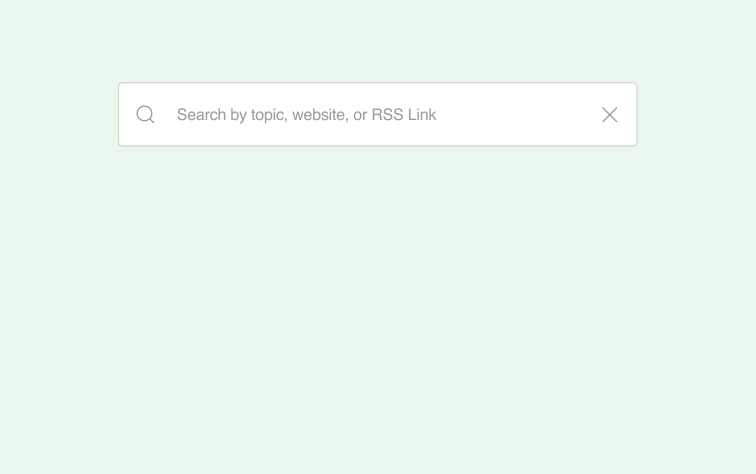
Choose a name for your new feed that makes sense to you.

That's it! You now have a new feed with a new source. Add as many sources you want to that feed, or create more feeds.
Enterprise users can use Team Feeds to organize your team's reading by topic or project.
First, add all the sources your team members follow to keep up with industry trends.
To name your Team Feeds, choose a taxonomy that makes sense for everyone. If you're in the finance industry, for example, you could name your Team Feeds like this:
- Finance Business
- Fintech
- Cryptocurrency
- Tech
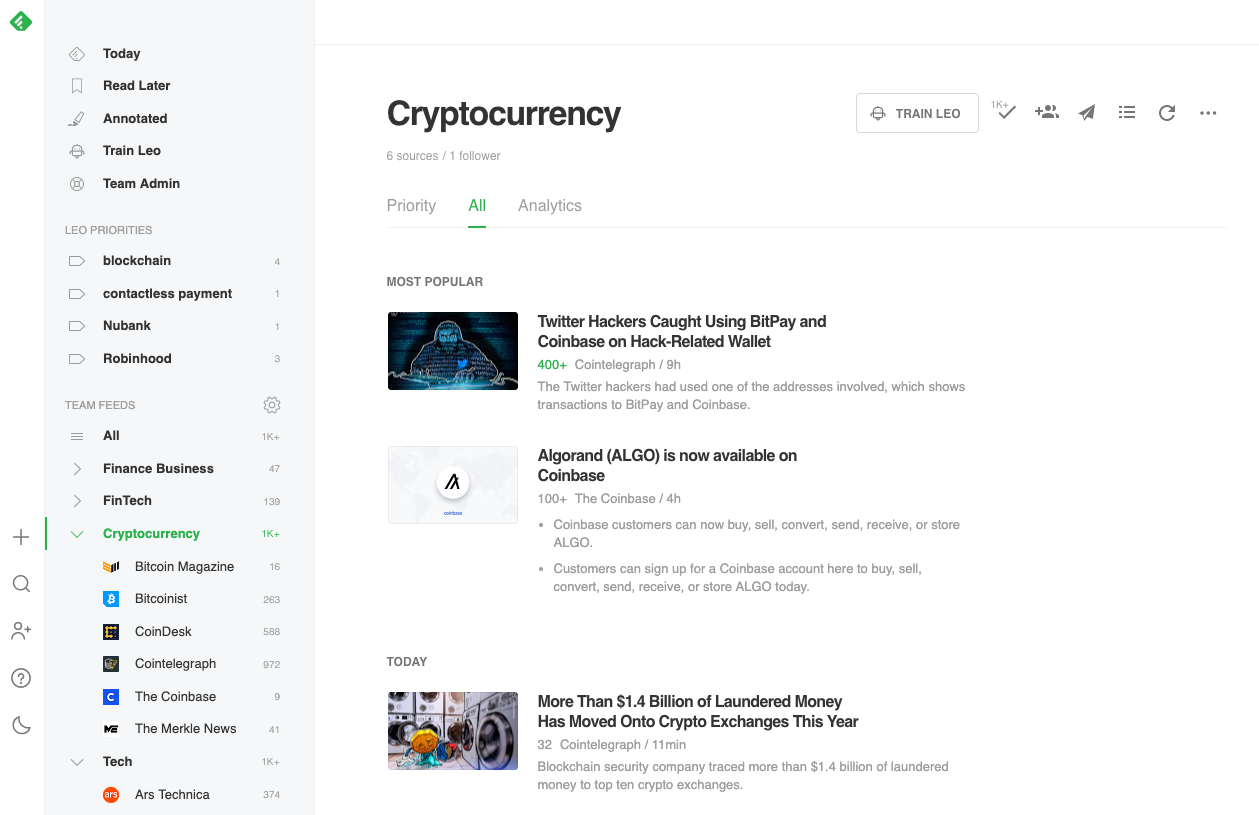
Discover new sources: Search for topics and skills
Once you've added some of your favorite sources to your Feedly, you can use the Discover page to find the best sources for any topic. Here's how:
- Click '+' in the left navigation bar.
- Search for any topic.
- Sort by Best Match, number of followers, articles per week, or relevance to find the right sources for you.
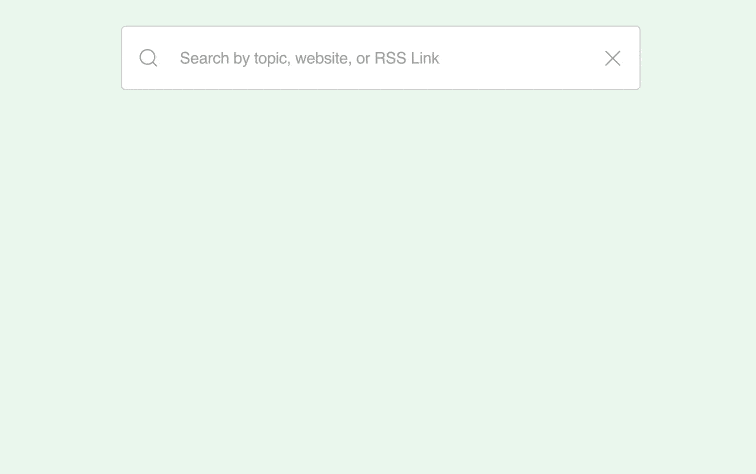
Search by Best Match to sort sources based on a balance of popularity and relevance.
Relevance is great for finding niche industry experts, because it considers how focused a source is on a topic, instead of how popular it is.
Want more? Get more inspiration for how to find the best content on Feedly.
Keep up with crucial industry trends with source bundles
We've created bundles of the best sources on specific topics so you can follow the top trade publications in your industry. Choose one of these bundles to immediately get the best sources on your industry.
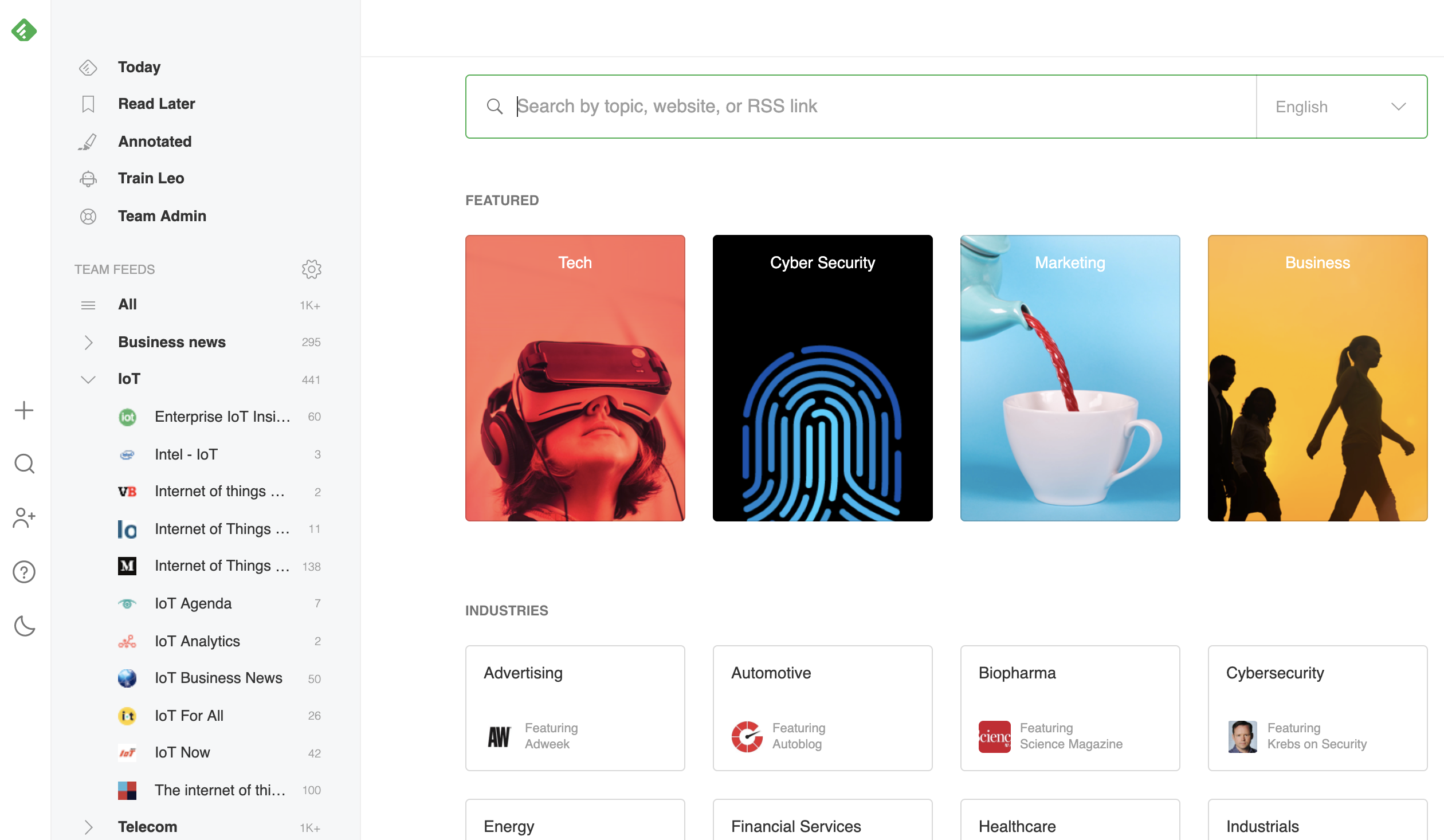
2. Train your AI research assistant, Leo, to filter out the noise
Finding the gems in a sea of articles can be overwhelming and time-consuming. That's where Leo comes in.
Leo is your personal AI research assistant. You can train Leo to automate your knowledge-gathering process so you can dig deeper into the topics and trends you care about, and filter out things you don't.
Unlike opaque algorithms, you're in control of Leo. You'll always know why content was prioritized or filtered out, and you can easily make changes. You make the rules, and Leo does the work.
Leo is available for all Pro+and Enterprise users.
Leo's core skills
We've taught Leo to read and analyze information so he can declutter your feeds and save you time. You can prioritize topics, trends, and keywords of choice, deduplicate repetitive news, mute irrelevant information, summarize articles, and so much more. Leo can also expand your knowledge-gathering by searching for topics and trends across the entire web, finding articles for you even from sources you don't have in your Feeds.
Define Priorities for Leo about what you're most interested in
Use Priorities to define what's relevant to you. Leo can recognize topics, trends, or keywords, recognize specific events, and more.
To create a Priority, select one of your feeds and click 'Train Leo'.
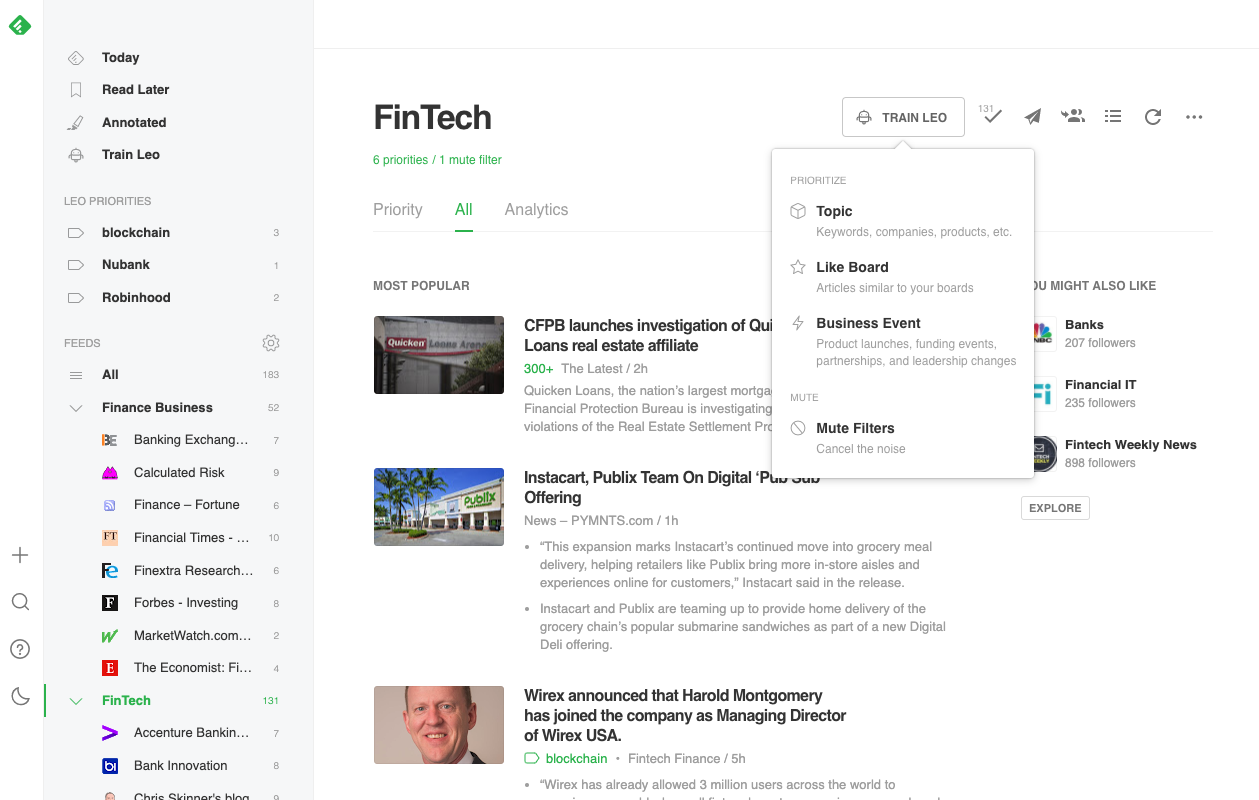
Here are some examples of what you can ask Leo to prioritize in your feeds
- Topic: prioritize mentions of topics, keywords, people, companies, products, etc.
- Like Board: prioritize based on articles you've saved to Boards
- Business Events: prioritize product launches, funding events, partnerships, etc.
- Security Skills: prioritize articles related to critical software vulnerabilities, malware threats, threat actor groups, the MITRE ATT&CK framework, and specific vendors. This Priority is available to Feedly for Cybersecurity users.
- Biopharma Skills: prioritize insights about topics like diseases, genes, and conditions, or research your competitors.
Once you've created a Priority, you'll find new articles that Leo catches in your Priority tab or in the 'Leo Priorities' section in the left navigation bar.
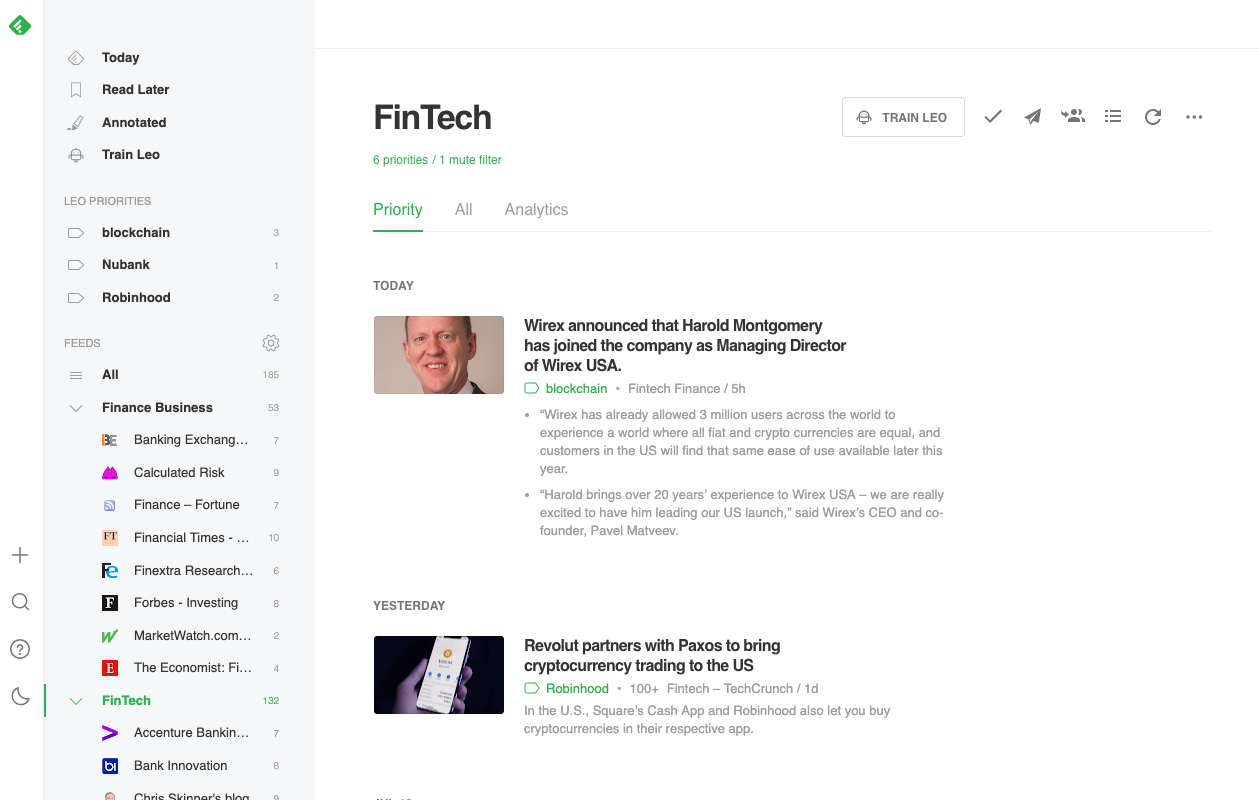
You can add multiple Priorities to a single feed or use AND, OR, and NOT to combine Priorities.
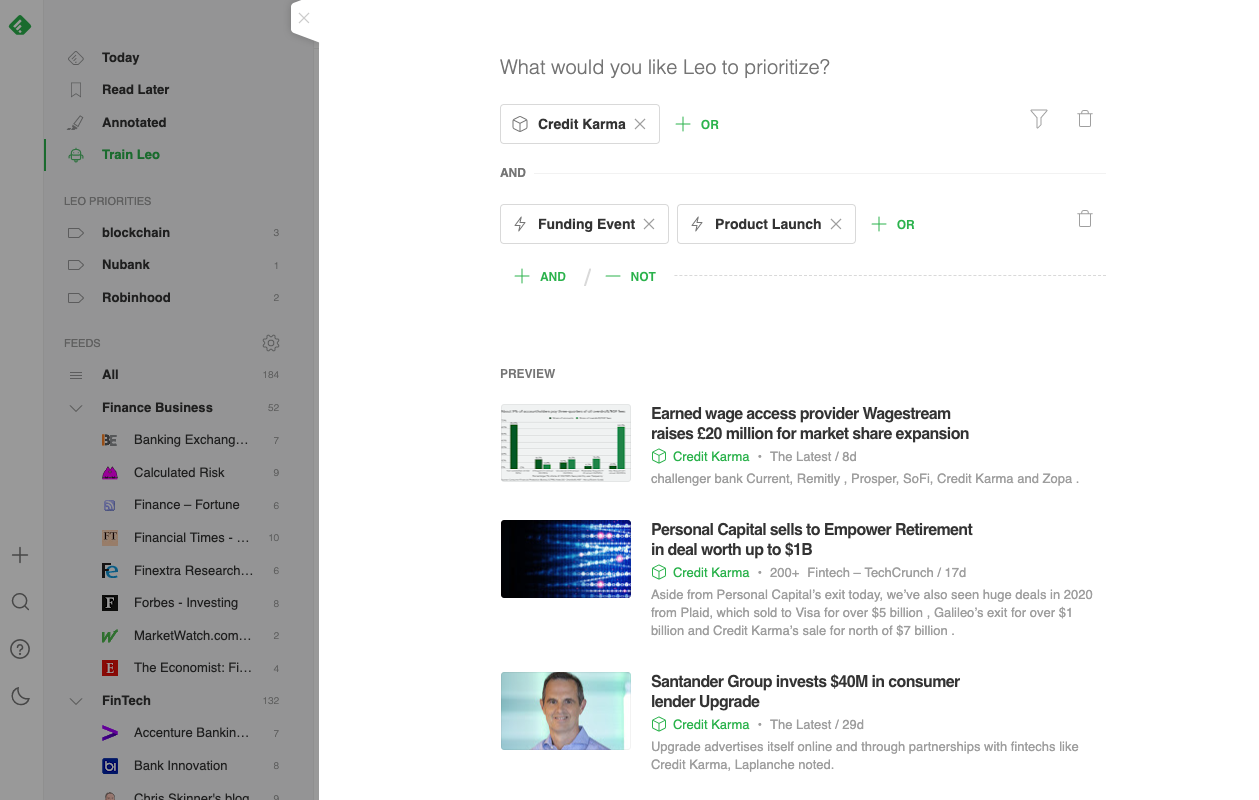
Use Mute Filters to stay focused
Mute Filters can be your most powerful tool to reduce noise and create a focused setup in your Feedly. Here's how to do it right:
When you create a Mute Filter, Leo mutes specific keywords and removes all mentions of those keywords from your feeds, temporarily or permanently. You can mute things like:
- Companies
- People
- Topics
- Authors
- Sites
To create a Mute Filter, click 'Train Leo' and choose 'Mute Filters.'
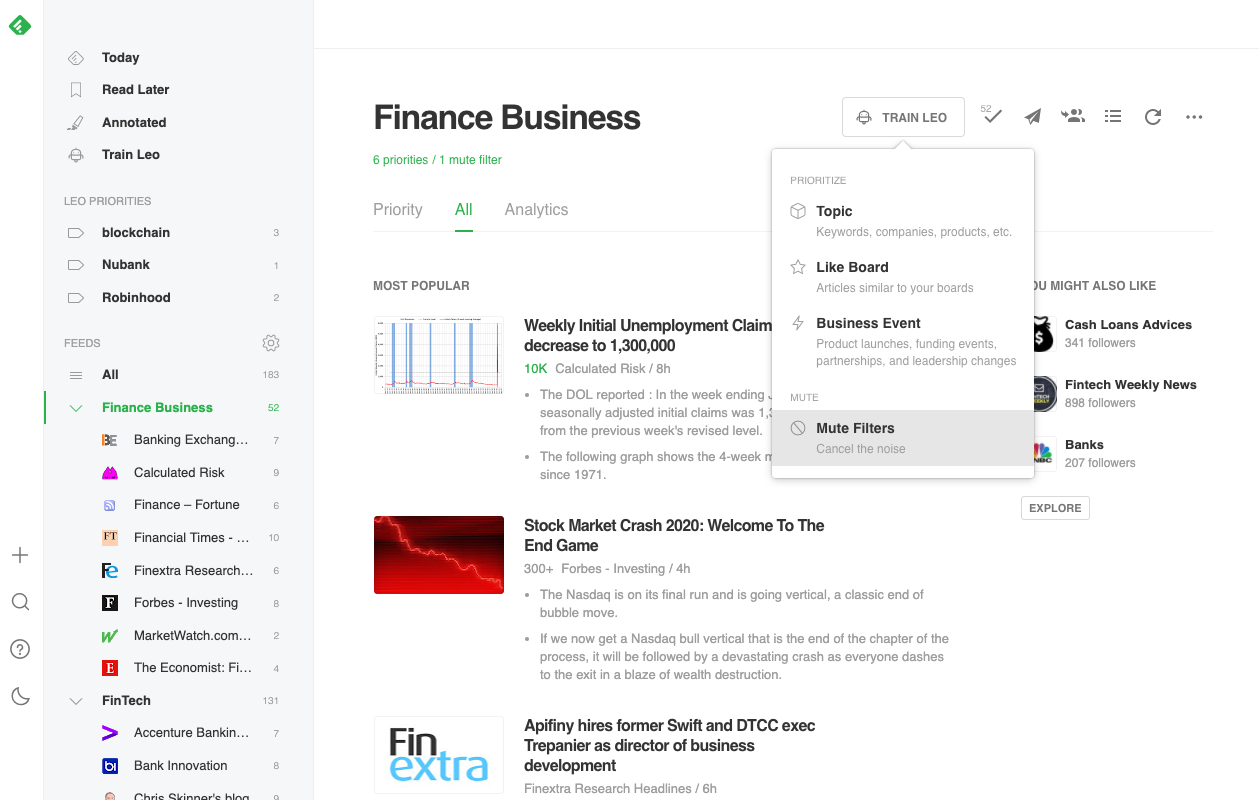
See all the ways you can use Mute Filters, or check out some examples of Mute Filters you can use to find the signal in the noise.
Our team of engineers has created specific Mute Filters so that Leo can recognize and mute certain topics.
For example, the market reports Mute Filter is a powerful tool to remove market reports, so that you can focus on only the topics and trends that matter to you, without the noise.
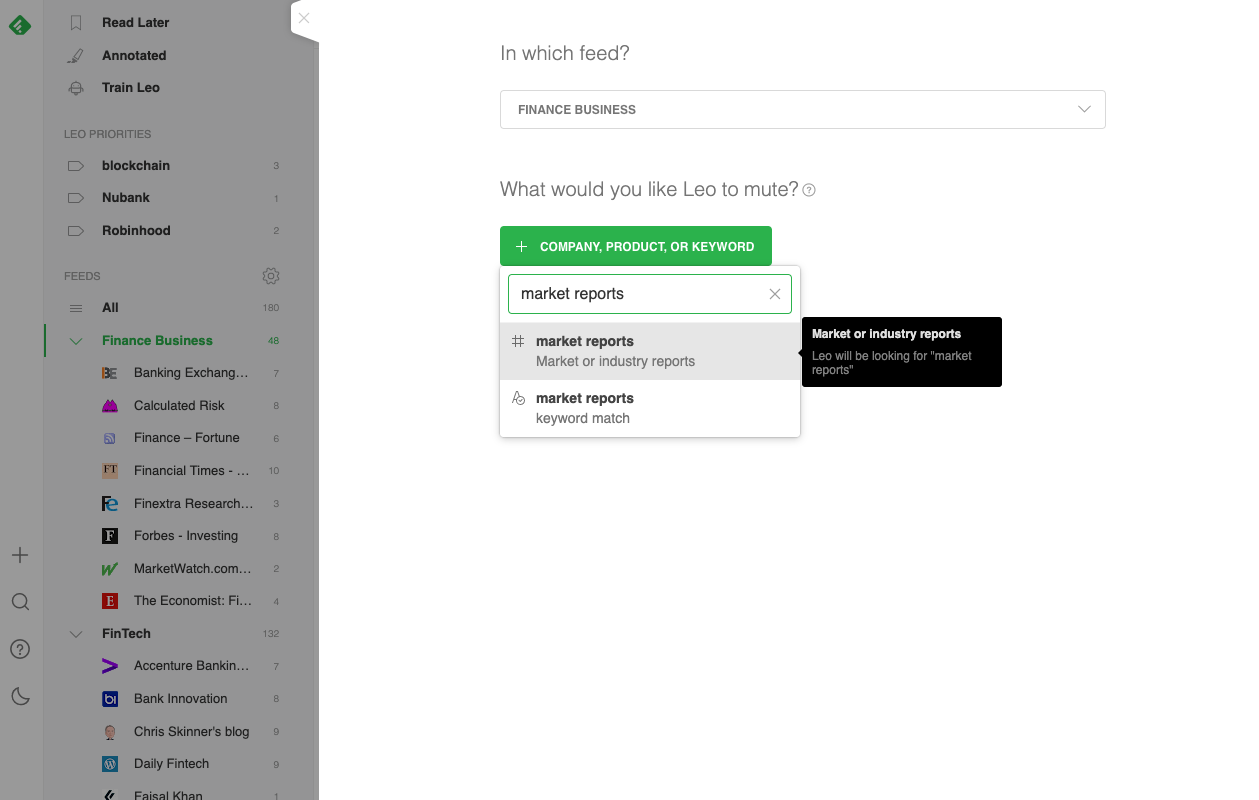
We're constantly teaching Leo how to recognize new concepts.
Remove repetitive content with near-exact deduplication
Leo's deduplication skill removes duplicate articles from feeds and keyword alerts. When you have a Pro+ or Enterprise account, this Leo skill is already activated for all of your feeds and keyword alerts. It runs in the background, removing any near-exact duplicate articles.
When Leo removes duplicates, you will see a small gray box at the bottom right-hand side of your feed that shows you how many duplicates have been removed.
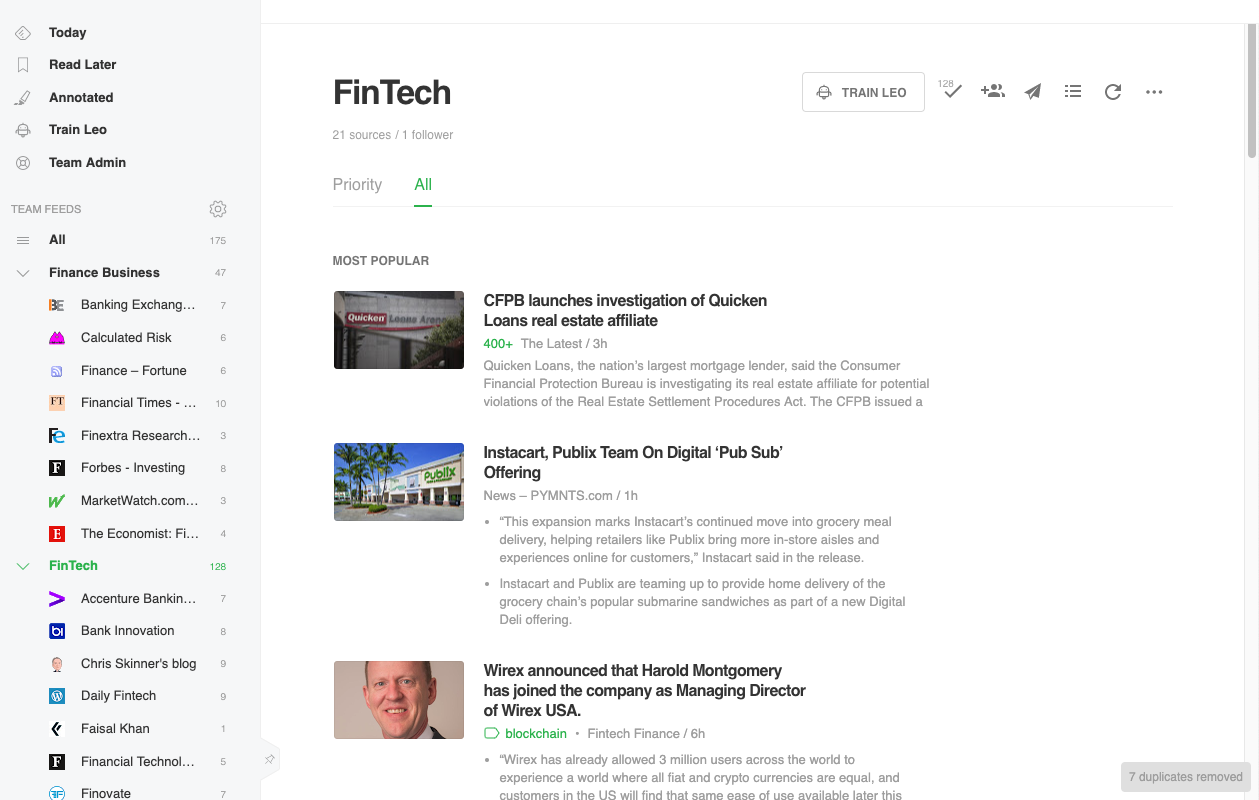
You can see the total number of duplicates removed in the 'Analytics' tab of your feed.
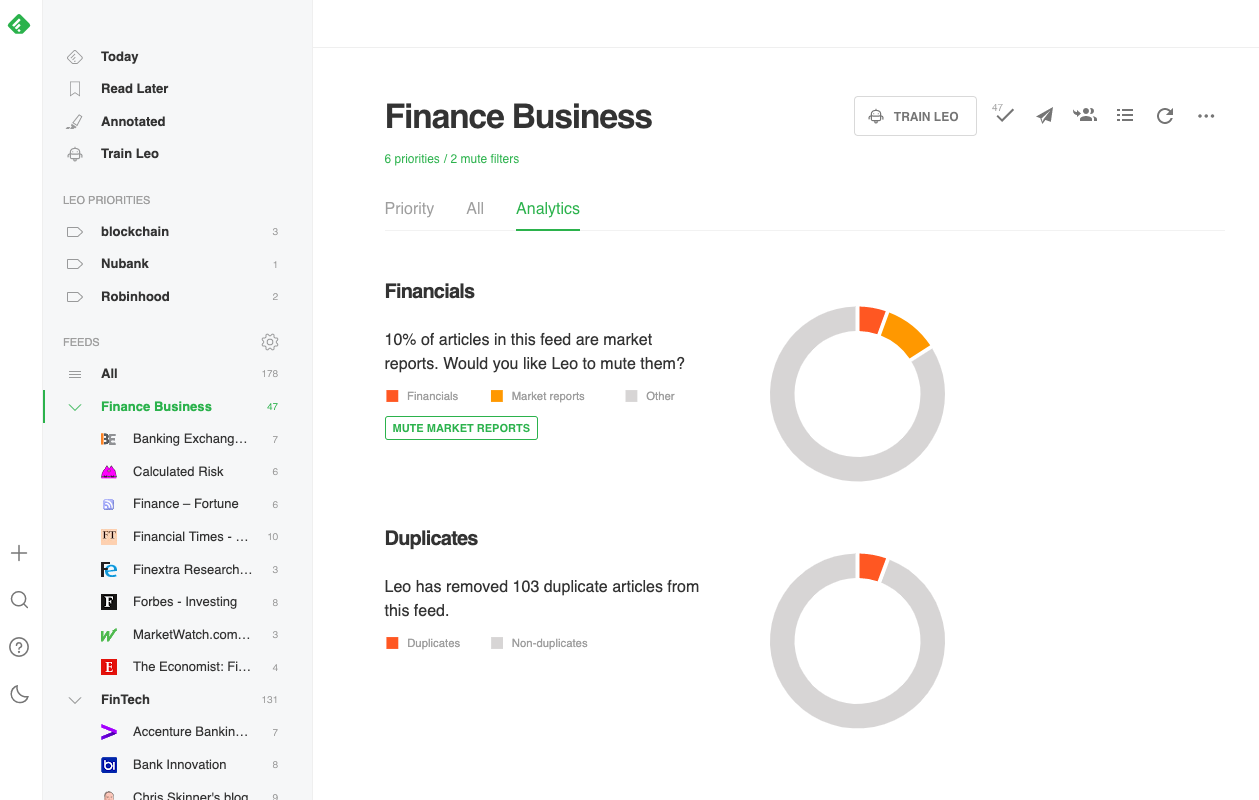
Near-exact deduplication means that Leo removes articles where the content has an overlap of 85% or more. Short articles with barely any content (less than 200 characters) can't be deduplicated right now (we're working on it!).
Find out more about deduplication details, and why you might still see duplicate articles in your feeds in our knowledge base.
Carefully curated content is only as valuable as what you do with it. Break down silos in your organization by sharing high-value information across teams.
When you invite your team to Feedly, it becomes a powerful platform for collaborative knowledge sharing and insight gathering.
Team Feeds can become your team's go-to place for monitoring content related to your industry and areas of focus. Team Boards can become repositories for must-read articles so that everyone's informed. Here's how to get started.
Invite your team
Invite your team members to follow along.
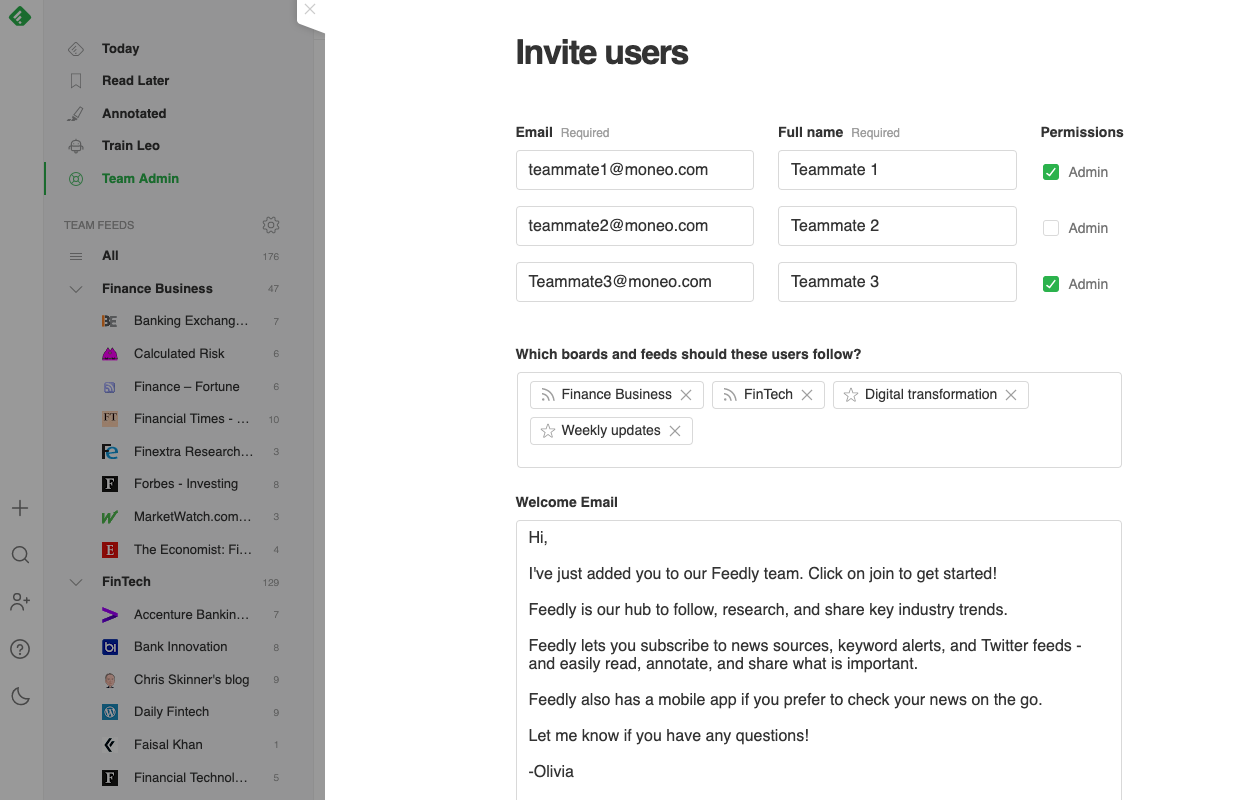
If you don't have a Feedly Enterprise account yet, you can request a free trial here to get access to Feedly's features for teams.
Create libraries of high-value content with Boards
When you find content that's valuable, save it to a Board for future reading. Save it to a personal Board, or add content to a Team Board to start creating libraries of must-read content for your team.
Team Boards are the private spaces where you and your team can save the best content you discover on the web.
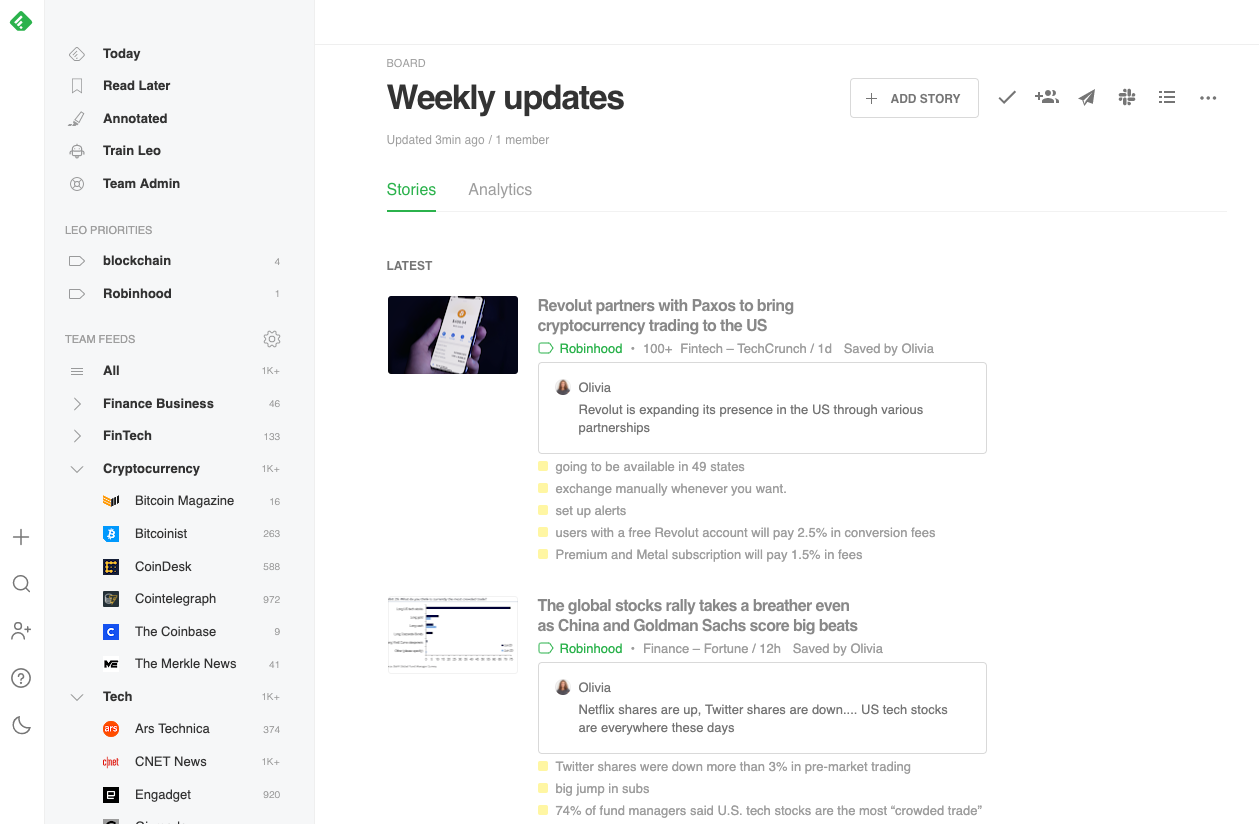
Add content in your Feedly to a relevant Team Board, or add an article outside of Feedly directly to a Team Board.
Did you know you can even add PDF files to Boards?
How to save content to Boards
On desktop, click on the Board icon to open your list of Boards.
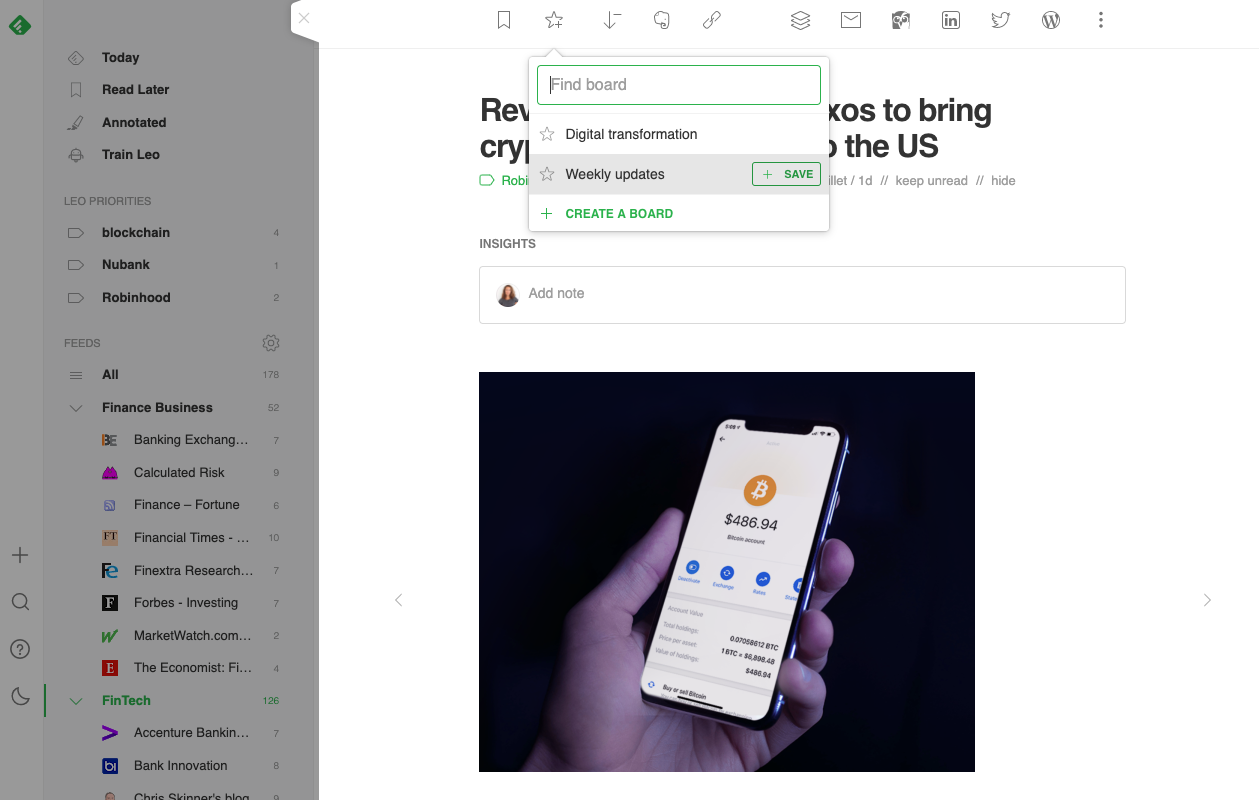
If this is your first Board, take a moment to give it a name. You can save an article to multiple Boards.
You can also add an article to Boards from the Feedly Mini browser extension for Chrome, Firefox, and Safari.
And if you're on the Feedly app on mobile, tap the Boards icon to save to one of your Feedly Boards.
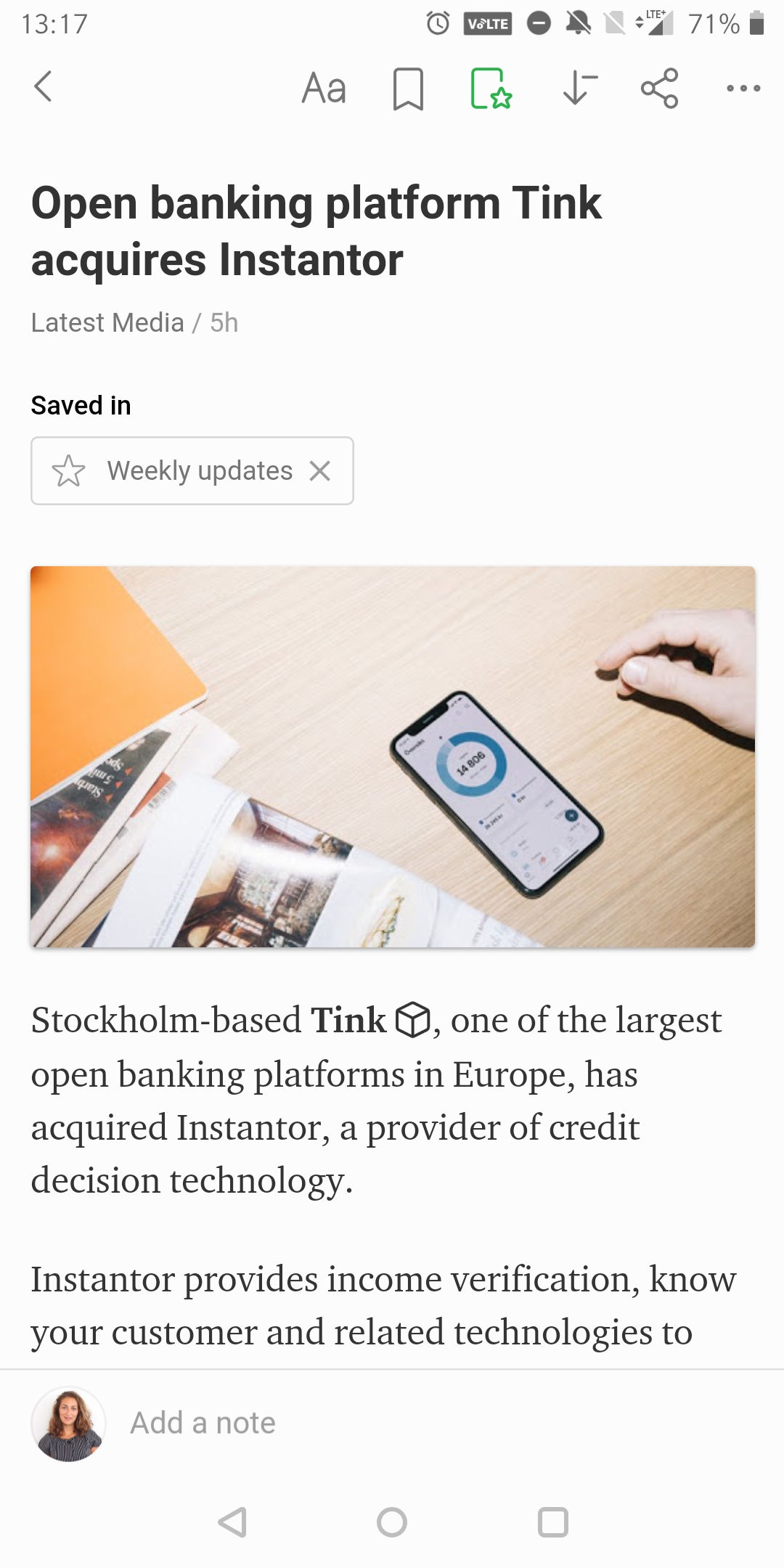
Or, if you have the Feedly app installed on your phone, you can select the "Save to Board" option from your phone's share menu.
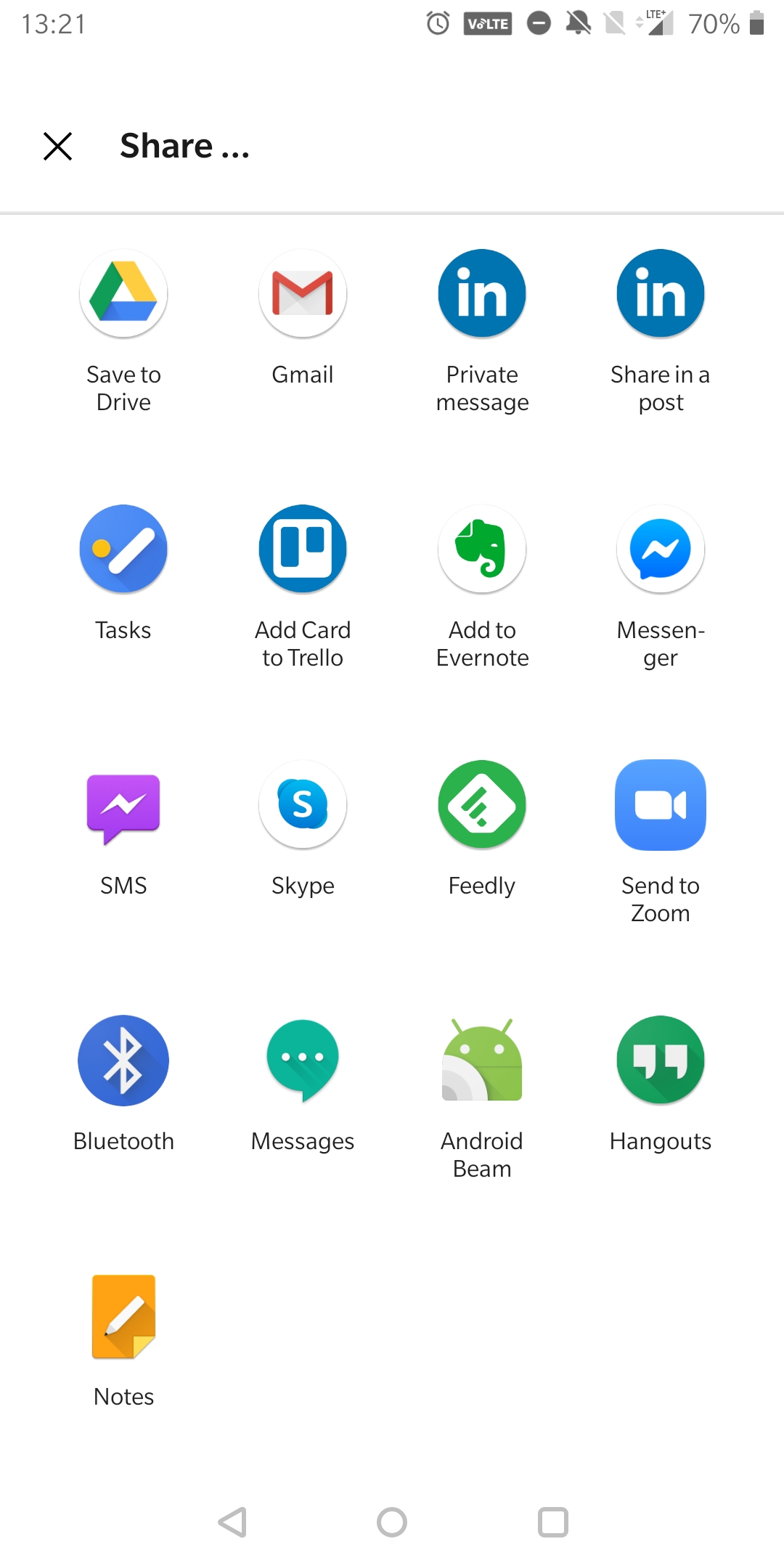
Once you've created Boards, you'll find them below your feeds in the left navigation bar.
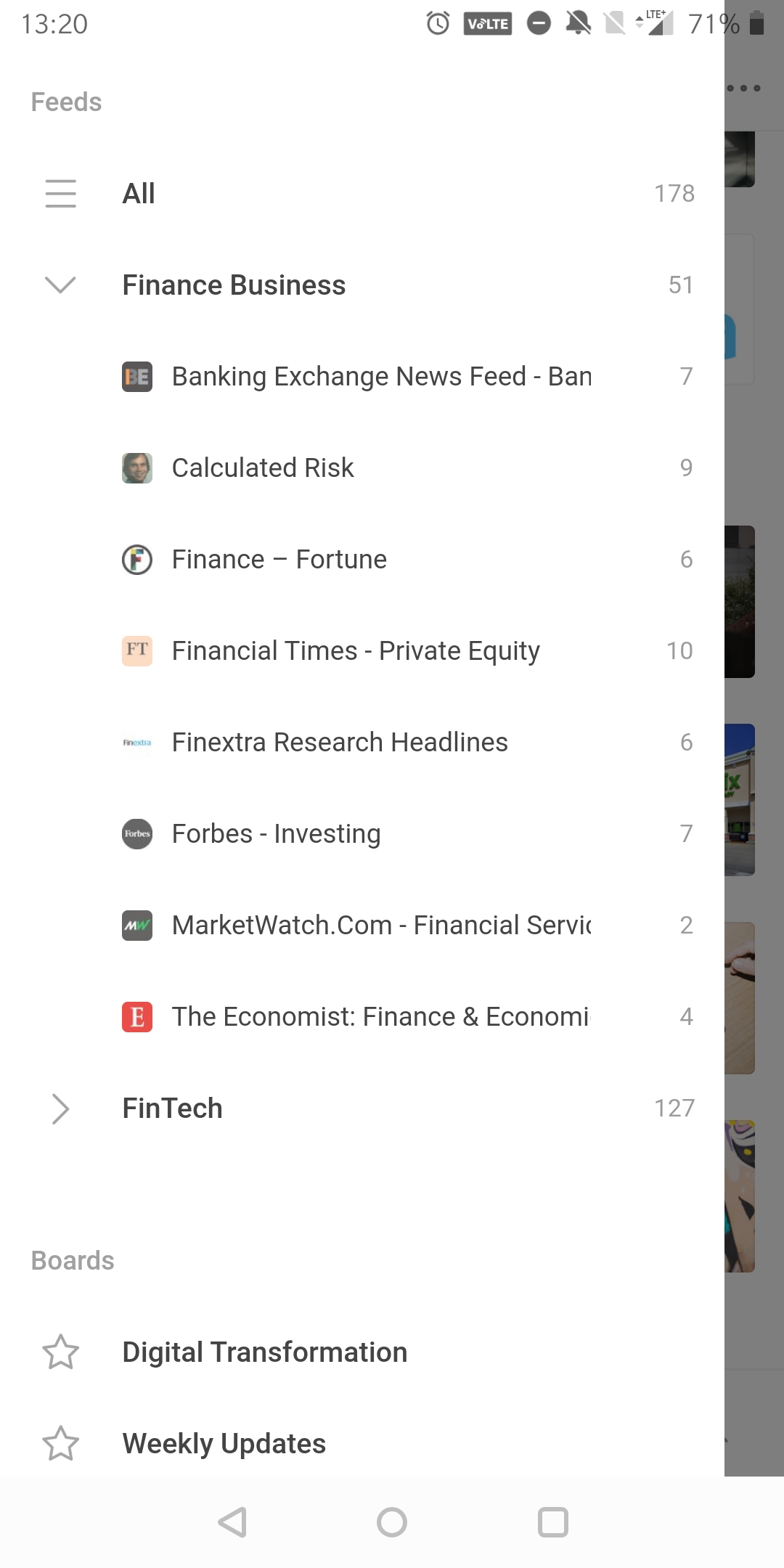
Add Notes and Highlights
To really engage with your reading, add Notes and Highlights to articles you've saved to Boards. This feature is available with any of Feedly's paid plans.
You can even tag teammates so they see the content that's most relevant to them.
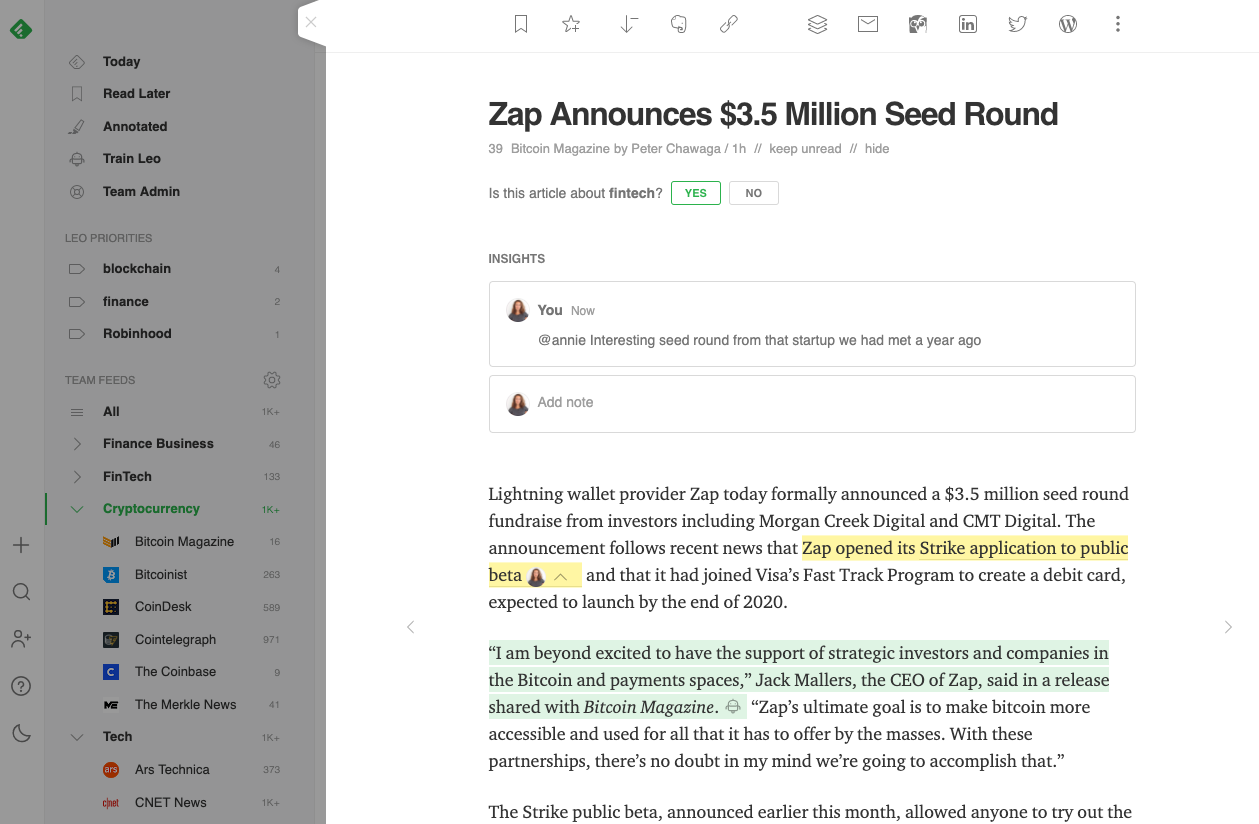
Team Newsletters are one of our most popular features for businesses who rely on Feedly for competitive intelligence or industry insights.
Sending a Team Newsletter is a simple, powerful way to share important industry trends and insight with the rest of your team via email.
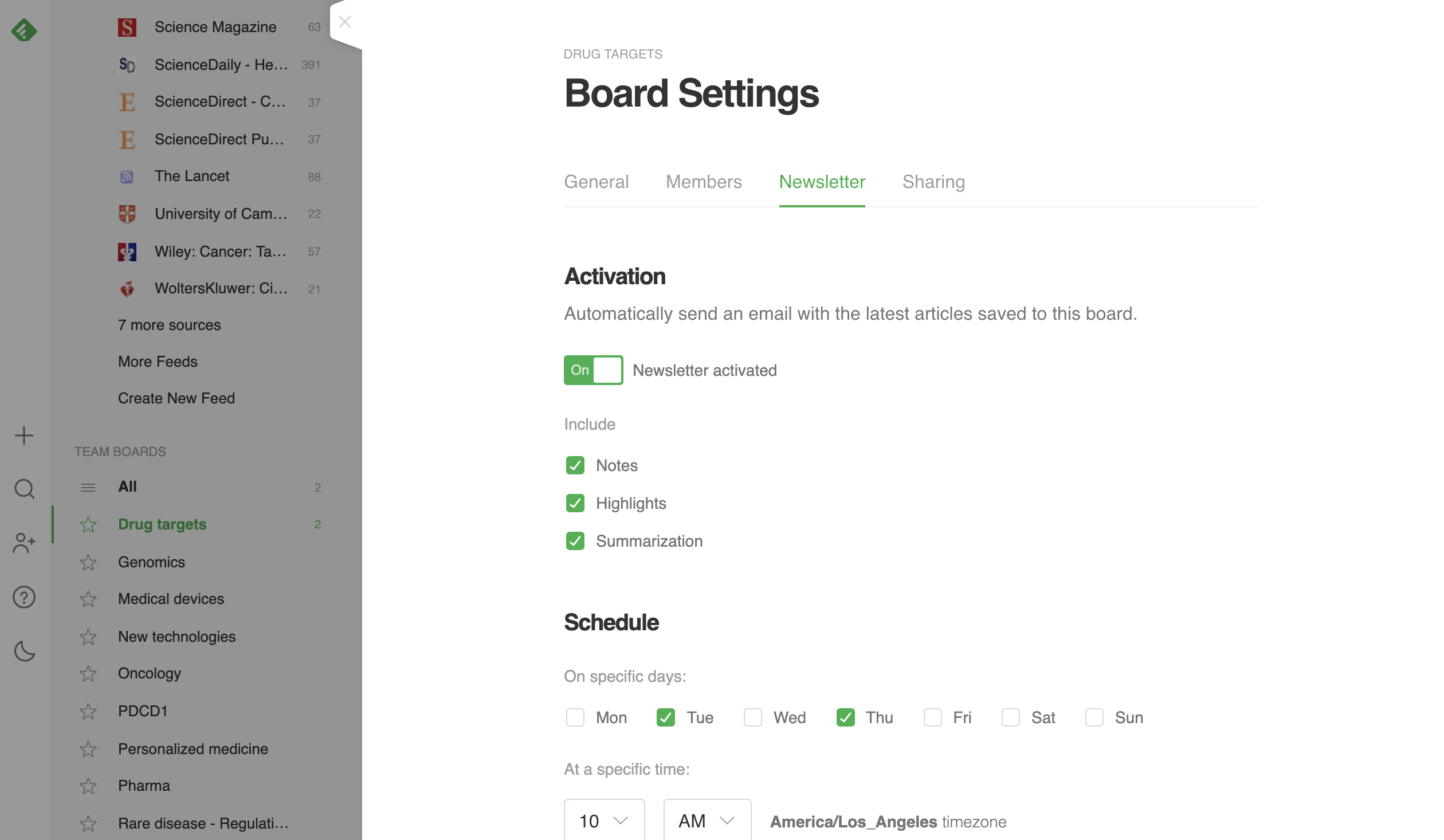
Provide a quick summary of relevant articles saved to a Board about a specific topic or project, and send it to anyone on your team, even if they don't have a Feedly account.
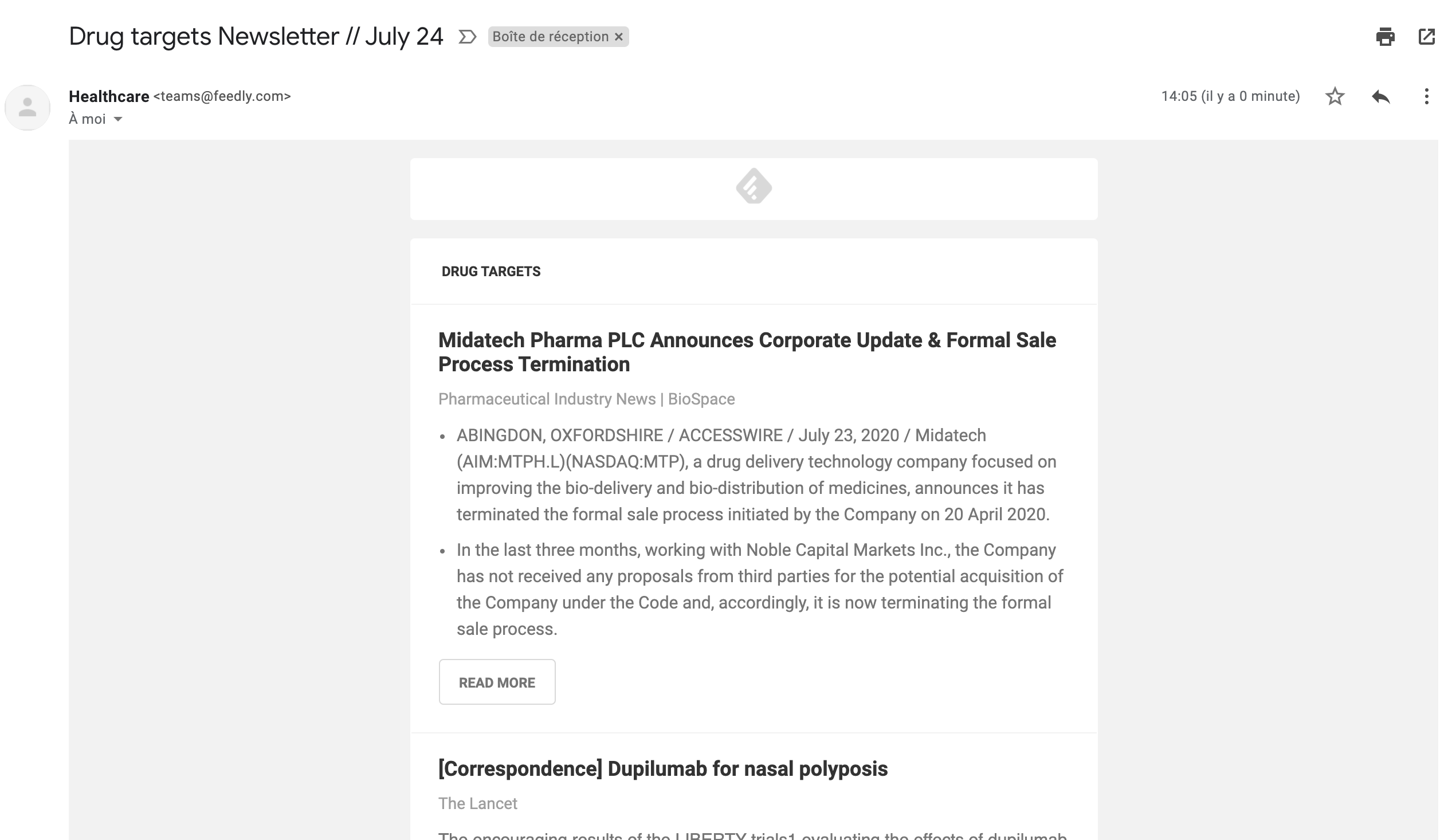
Here's a guide for turning Team Boards into Newsletters.
Connect your team workflow with integrations
You can use integrations with messaging platforms or Zapier to get notifications when certain types of content has been added to your Feedly.
Use Zapier to connect your Feedly to over 750 other apps and services.
You can use Zapier integrations on any Pro+ or Enterprise Feedly plan.
Next steps
Nice! You're well on your way to getting the most out of Feedly.
Find advanced tips and features in our knowledge base or new feature updates every week or so on the Feedly blog.
Source: https://blog.feedly.com/getting-started-with-feedly/
0 Response to "How Do I Add Blogs to My Feedly Account"
Post a Comment